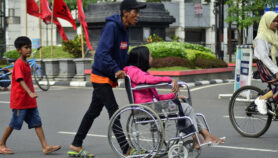By: Athar Parvaiz
Send to a friend
The details you provide on this page will not be used to send unsolicited email, and will not be sold to a 3rd party. See privacy policy.
[JAMMU] India needs to craft a learning ecosystem for innovations that remove social and economic inequities and promote inclusive growth, the Indian Science Congress, the country’s biggest annual gathering of scientists, heard.
Ranbir Chander Sobti, president of the 101st edition of the congress, said at its inauguration, on 3 February, that an inclusive approach to innovations is needed for economic development to respond to grassroots needs.
Sobti suggested a focus on innovations that create and expand economic opportunities for poor people at the bottom of the social and economic pyramids, who have no access to clean water, reliable energy; and good health and nutrition.
An inclusive approach, he said, would involve solutions developed largely through improvisation and experimentation in India’s resource- constrained environment.
Grassroots innovations are “often accomplished by individuals who may have little or no formal education, and steer innovation without having any advanced scientific knowledge,” Sobti said. “For such people, there are negligible market opportunities available, mainly due to the absence of early stage financing and limitations in using prospects of local markets,” he said.
Any developing society, Sobti said, would depend on low-cost manufacturing, knowledge-based industries, capacity and capability to innovate new technologies and new business models. “Innovation is thus, a crucial driver of rising prosperity and improved national competitiveness,” he added.
The focus on grassroots innovations continued on 4 February when A.P.J. Abdul Kalam, India’s former president and top scientist, urged Indian students to have a broad outlook focus in coming up with new products that have a global appeal.
“It (innovation) can be anywhere, and in any part of the world. It may start from a fisherman’s hamlet or a farmer’s household, or a dairy farm or cattle-breeding centre; or it could emanate from classrooms or labs or industries, or R&D centres,” Kalam said.
Yash Pal, former chair of India’s University Grants Commission, highlighted the need to tap community knowledge and move away from a tendency on the part of scientists and Indian society as a whole to focus on excessive theoretical knowledge and sideline practical experience and ideas.
According to Sobti, there was a need to shed a “purist approach and learn to interact with just about any discipline and take the benefits of synergies and convergence” as any innovation policy required public-private partnerships and the involvement of a broad range of social agents and institutions.














